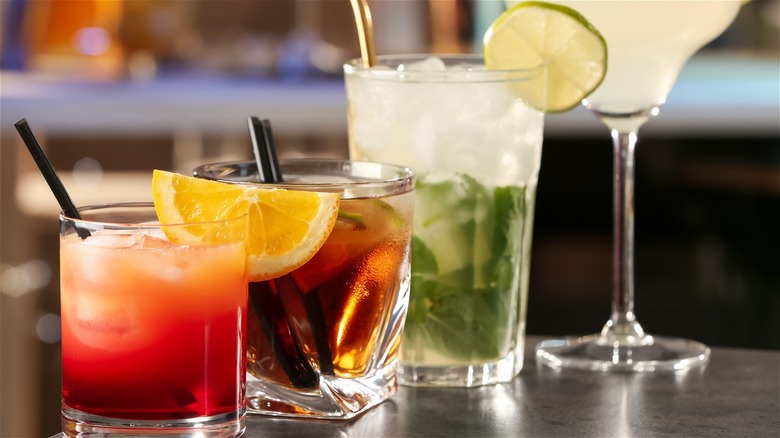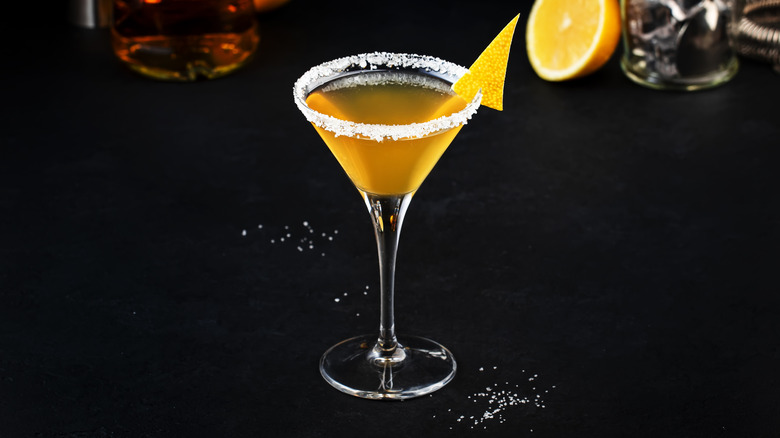How Cocktail Artists Are Turning Complex Drinks Into Powders
Ever bought lemonade or iced tea mix in a can — or poured some hot water into dried coffee crystals for your morning joe? Many drinks (and even foods like eggs and potato flakes) can be dehydrated and kept in powder form for a long time, preserving their shelf life and minimizing the space they take up. While most people don't like the taste of powdered beverages as much as their fresh counterparts (most people wouldn't pick Tang over fresh OJ), they are useful alternatives to have on hand.
Intriguingly, the same approach can be applied to alcoholic drinks. In fact, a company named Palcohol manufactures alcoholic drink powders that can be added to water to create an alcoholic beverage. This requires a patented process, which makes use of dextrin and carbohydrates. Invented in the 19th century and further developed in the 1970s, it's a fascinating approach, but most people would still prefer a nice bottle of spirits.
But instead of swapping out the regular stuff for powder, bartenders are tinkering with powders as something to add to cocktails. It's a genius "both and" sort of approach. Bartender Don Lee is having some fun mixing things up this way (via Punch). He was inspired by Thomas Keller's use of dried vegetables as garnishes and decided he should try his hand at making alcoholic drink rims. By reducing sweet alcohols into flavor dusts, Lee can add a complex new taste experience to a drink.
Try this at home: powdered alcohol adds an edge
The technique behind powdered alcohol is fairly straightforward, though it takes some trial and error: you take your sweet, dense, alcoholic beverage (small quantities are best) and heat it until it's just under boiling point (per Punch). Don Lee recommends doing it in a microwave, but you can try it on your stovetop, a method employed by Alchedemics. Once you've gotten the liquid hot enough, Lee suggests reducing it to a thick, syrupy substance via microwave bursts. You then let it dry overnight until it becomes a sort of grown-up hard candy, at which point, it's ready to be crushed.
After the solidified alcohol has been smashed into powder, you have a crystallized liqueur that will keep for a long time, and is a great garnish for your glasses. A colorful rim of Campari dust can add visual interest, and Lee suggests using it to round out the citrus notes in something like a Paloma. You can also use one of these rims to vary your drink's flavor profile, adding a suggestion of a cocktail that's similar yet different: sprinkling a summery Blue Curaçao rim on an Aviation gives a little hint of a Lady in Blue.
The technique is labor-intensive and hard to manage at a regular bar, so it's a trick best-suited for drinking at home, giving your inner mixologist some space to play.

